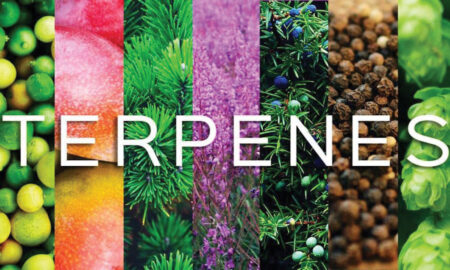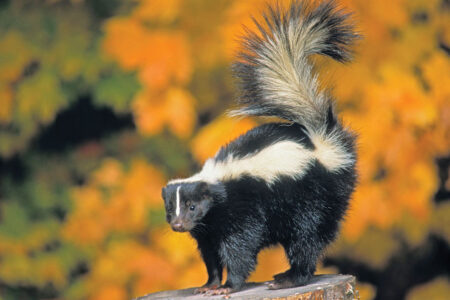Your Nose Knows Terpenes
You may not be able to notice them by taste or smell in a hemp-based CBD sublingual oil, even one made from a high-quality extract, but the terpenes are present and you would be receiving the benefits of them, along with the benefits of the cannabinoids like CBD or THC. Through inhalation of a high-quality hemp flower from a strain like Sour Space Candy, Hawaiian Haze, Special Sauce or Juicy Fruit the flavorful, aromatic terpenes are quite evident. This is due to the most prominent terpenes found in that specific strain. Marijuana strains highlight their aromatic bounties best with names like Lemon Haze, Blueberry Bubba, and Mango Kush.
 Terpenes are volatile molecules that evaporate easily and quickly and announce themselves to the nose. This is the basis of the popular alternative-healing practice called aromatherapy. Like their odorless cannabinoid cousins, terpenes are oily compounds secreted from the glands of the cannabis flowers’ trichomes and give the strain its aromatic bouquet.
Terpenes are volatile molecules that evaporate easily and quickly and announce themselves to the nose. This is the basis of the popular alternative-healing practice called aromatherapy. Like their odorless cannabinoid cousins, terpenes are oily compounds secreted from the glands of the cannabis flowers’ trichomes and give the strain its aromatic bouquet.
Unlike cannabinoids that are predominant mostly in cannabis, terpenes are common throughout the plant world. Produced by countless plant species, terpenes are prevalent in fruits, vegetables, herbs, spices, and other botanicals. Terpenes are common ingredients in the human diet and have generally been recognized as safe to consume by the US Food and Drug Administration.
Scientists have identified and characterized the molecular structure of some 20,000 terpenes, which compose the largest category of plant chemicals. Terpenes can be further broken down into mono-terpenes, diterpenes and sesquiterpenes, depending on the number of repeating units of a five-carbon molecule called isoprene, the structural hallmark of all terpenoid compounds.
To date, around 200 terpenes have been found in cannabis, but only a handful of these odiferous oily substances appear in amounts substantial enough to be noteworthy (or nose-worthy). The terpenoid profile varies considerably from strain to strain. The range of flavors expressed by the genus Cannabis is extraordinary – no other plant on the planet can equal the cacophony of smells and tastes like those that are available from cannabis.
The terpenes in cannabis have also given the plant an enduring evolutionary advantage. Some of these essential oils alone are pungent enough to repel insects and grazing animals, while others help to prevent fungus. To combat plant disease and insect infestation, organic pot and CBD hemp growers spray the terpene-rich essential oils of the seed of the Neem tree and rosemary onto their crops. Terpenes not only deter insects, but also help to attract pollinating insects to the flowers.
Terpenes are healthy for people and pharmacological studies have discovered the wide-ranging therapeutic attributes of terpenoids (cured/dry terpenes), including several well-known aromatic compounds that are prominent in cannabis strains.
Some of the Most Common Cannabis Terpenes
- Alpha-pinene—(essential pine oil) the most common terpene in the plant world and one often found in cannabis, is a bronchodilator potentially helpful for asthmatics. Pinene also promotes alertness and memory retention by inhibiting the metabolic breakdown of a neurotransmitter in the brain that stimulates these cognitive effects.
- Myrcene—a terpene present in numerous cannabis varieties and believed to be the most prevalent, is a sedative, a muscle relaxant, a hypnotic, an analgesic (painkiller) and an anti-inflammatory compound. It has a musky flavor/ aroma and is also found in mango, hops and cardamon. High content of this terp is responsible for the infamous “couch-lock” effect of some marijuana strains and good for those with insomnia.
- Limonene—a major terpene in citrus as well as in cannabis and has been used clinically to dissolve gallstones, improve mood and relieve heartburn and gastrointestinal reflux. Limonene, an anticonvulsant, has been shown to destroy breast-cancer cells in lab experiments, and its powerful antimicrobial action can kill pathogenic bacteria.
- Linalool—a terpene prominent in lavender as well as in some cannabis strains, is an anxiolytic compound that counters anxiety and mediates stress. In addition, linalool is a strong anticonvulsant, and it also amplifies serotonin-receptor transmission, giving an antidepressant effect.
- Beta-caryophyllene—a sesquiterpene found in the essential oils of black pepper, oregano, cinnamon and other edible herbs, as well as in cannabis and many green, leafy vegetables. It is gastro-protective, good for treating certain ulcers, and shows great promise as a therapeutic compound for inflammatory conditions and autoimmune disorders because of its ability to bind directly to the peripheral cannabinoid receptor known as CB2.
 The amount of a specific terpene can determine if the aroma is pleasant to your olfactory senses or not. While a minute amount of Pinene may be refreshing, an abundance of it could overwhelm and give the strain a more turpentine aroma and flavor.
The amount of a specific terpene can determine if the aroma is pleasant to your olfactory senses or not. While a minute amount of Pinene may be refreshing, an abundance of it could overwhelm and give the strain a more turpentine aroma and flavor.
The mystery still remains to scientists which compounds give cannabis its undisputed “skunky” aroma. Some say it is the Myrcene, others say it is combination of terpenes that together smell like a compound call Thiol, that yes, is found in skunk spray. A reaction caused by light in green-bottled beer also creates this same skunky smell of Thiol. (Ever had a Heineken?)
As touted repeatedly, cannabis is a highly-complex and evolved plant, comprised not only of an array of beneficial organic compounds called cannabinoids, but also flavorful/aromatic terpenes that add to its therapeutic effects. As with any legal, quality cannabis (hemp or marijuana) product, a complete lab analysis is made that indicates the percentage of cannabinoids by dry weight of the sample along with a terpene profile. This important profile shows which terpenes are most prominent in the sample and therefore in your product. The terpene profile of a cannabis strain is a determining factor used by a “budtender” (salesperson) at a dispensary in recommending the best strain for the particular ailment of a medical cannabis patient. Terpenes add to the so called “entourage effect” of a full-spectrum product. And basically, they give you more bang for your cannabis buck.
Donna is a Horticulturist and Hemp advocate. She transplanted her business HelloHemp! to Quepos, which offers top-quality, full-lab tested CBD products.
For more info follow us on hellohempar.com, [email protected] or call/text/WhatsApp 6007-7779.

